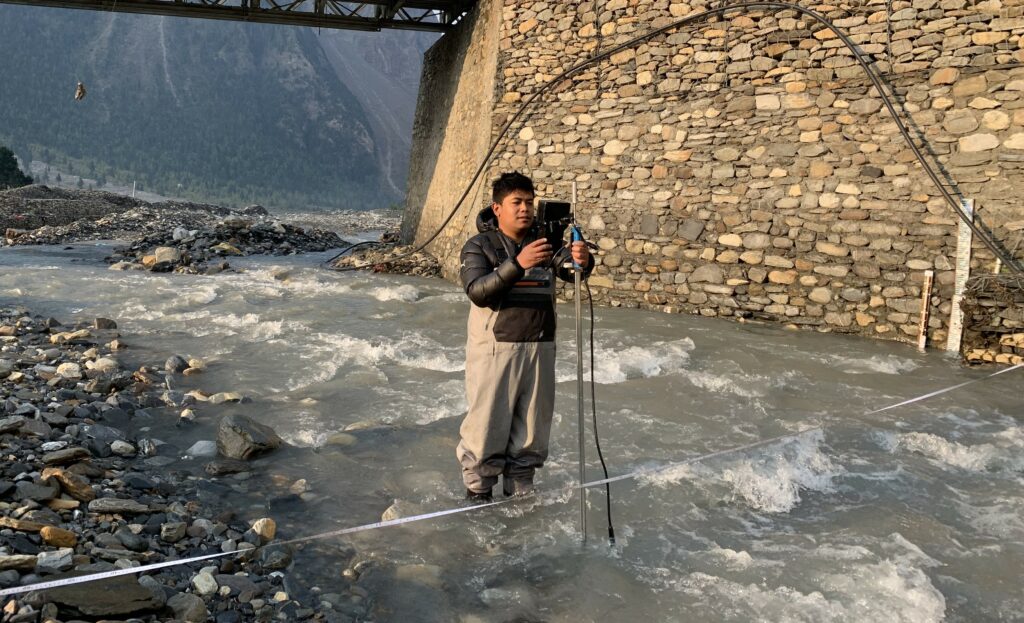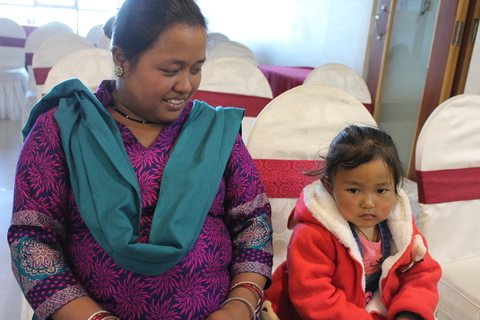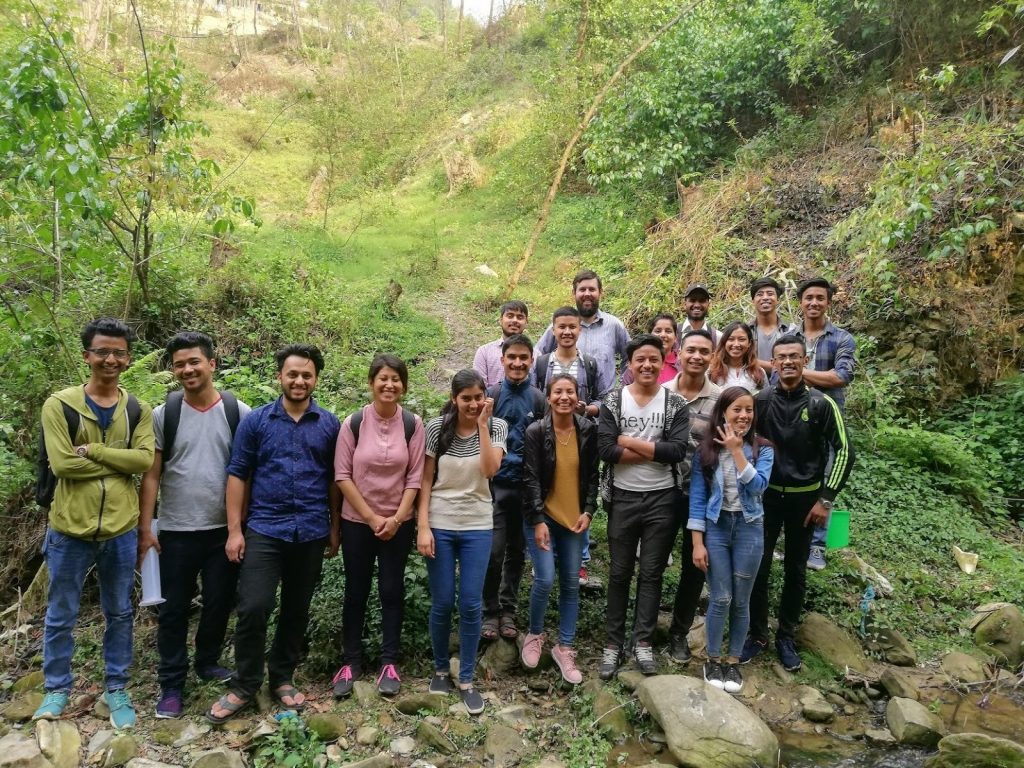By Kaushal Rijal and Sudeep Duwal
Streamflow is a key indicator of hydrological processes such as precipitation, infiltration, and evapotranspiration, offering insights into long-term hydroclimatic changes (Gautam and Acharya, 2011). It is highly dynamic, often changing significantly within a short period, and is influenced by various factors, including snowmelt, river bed slope, hydro-climatology, sediment deposition, and catchment size. The importance of streamflow cannot be overstated- it directly impacts critical processes such as water supply management, pollution control, irrigation, flood control, energy generation, and industrial use (Herschy, 2002). However, despite its wide-ranging applications, streamflow data collection has been on a decline globally, specifically in the headwater streams (Davids et al., 2019) posing challenges to the sustainable management of freshwater resources. Addressing this global challenge requires innovative and cost-effective solutions for data collection, particularly in regions where resources are limited.
To tackle this challenge, Smartphones For Water Nepal (S4W-Nepal) has been at the forefront of streamflow monitoring in the Kathmandu Valley since 2017. By leveraging citizen science, mobile technology, and the enthusiasm of young researchers, S4W-Nepal generates vital hydrological data, including streamflow and water levels. This initiative focuses on the headwaters of the Valley, where reliable streamflow data is often scarce, and uses advanced tools like the SonTek FlowTracker Acoustic Doppler Velocimeter for precision measurements in the Bagmati River and its major tributaries (Hanumante, Manohara, Dhobi, Bishnumati, Balkhu, Nakkhu, Kodku, and Godawari Khola).
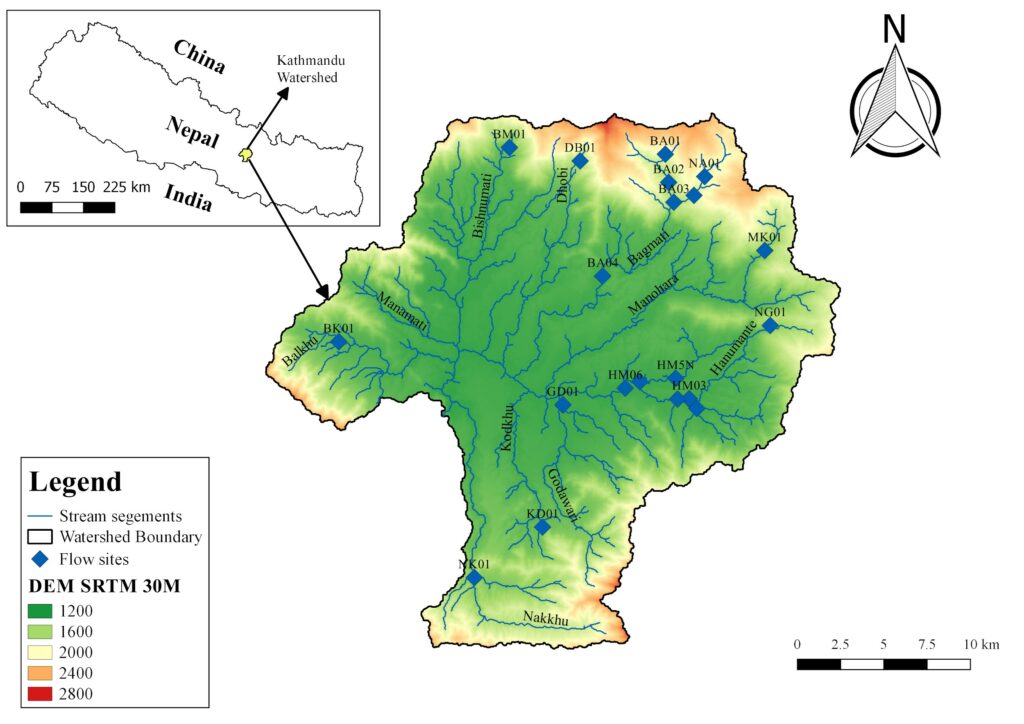
S4W-Nepal combines precision tools with cost-effective alternatives to measure streamflow effectively. The Acoustic Doppler Velocimeter (ADV) is a widely used standard method for streamflow measurement, valued for its precision, portability, and ease of operation. It works by utilizing the Doppler effect to measure the velocity of water particles within a specific sampling volume. Acoustic waves are transmitted at a set frequency, and as these waves reflect off water particles, the device captures the returning signal to calculate their velocity. This approach ensures reliable and accurate measurements, making the ADV an essential tool for hydrological studies. Further, S4W-Nepal employs cost-effective methods such as the float method and salt dilution method to monitor streamflow, particularly in headwater regions. These approaches are practical alternatives when advanced tools are unavailable, making them ideal for outreach programs that train students and enable S4W-Nepal to conduct successful seasonal campaigns, engaging young researchers to collect valuable streamflow data across the Kathmandu Valley.
A day in the field: young researchers in action
Each month, young researchers from S4W-Nepal conduct field visits to streamflow measurement sites across the Kathmandu Valley. Before heading out, the team ensures all equipment is in working order, including the SonTek FlowTracker handheld device, the ADV probe, wading rods, measuring tape, and batteries.
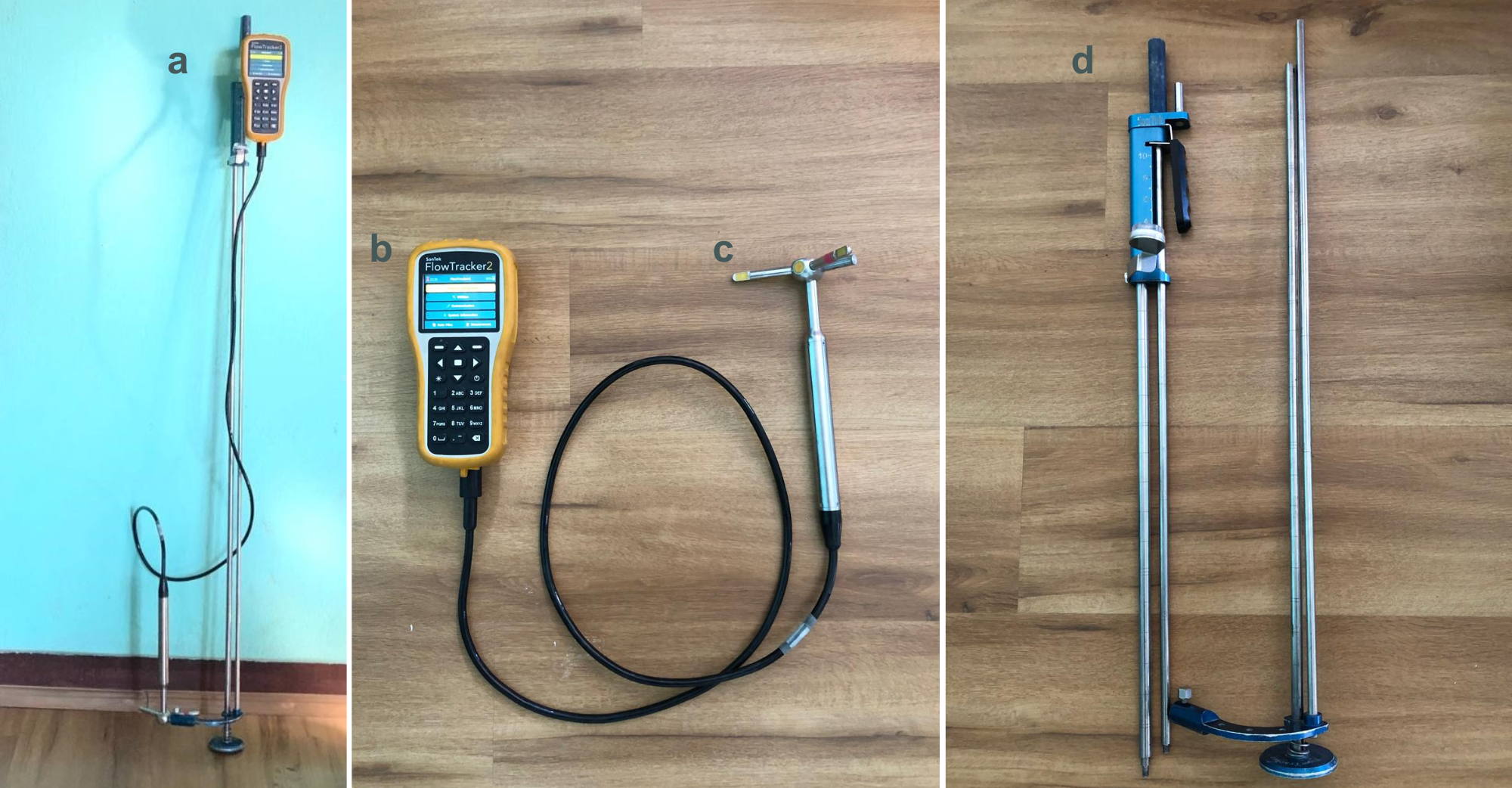
In the field, the SonTek FlowTracker is assembled by attaching the handheld device to the top and the probe to the bottom of the wading rod. The probe, equipped with a transmitter and a receiver for the acoustic waves, is submerged in the stream to measure water velocity. The handheld device controls the probe and records the data. To determine the stream’s width, a measuring tape is stretched across the cross-section, and fixed intervals are marked to ensure at least 15 measurement positions. At each position, the device records water velocity and depth, while the wading rod, with its graduations, helps measure depths across the cross-section. The recorded data allows the device to generate a cross-sectional profile and compute the total discharge using the measured velocities.
The discharge results obtained from the FlowTracker are recorded using an Android mobile application, Open Data Kit (ODK) Collect. The recorded data undergoes quality control using a Python-based S4W web app and is then shared publicly via the S4W data portal (https://data.smartphones4water.org).
Despite challenges such as high flows during monsoons or freezing temperatures in winter, field visits offer valuable insights and real-time visualization of streamflow variations over time. These visits go beyond the technical task of discharge measurement; they offer opportunities to observe and understand the dynamics of streamflow firsthand while dealing with real-world scenarios. This hands-on experience helps develop a deeper understanding of hydrological processes and their variability across different settings.
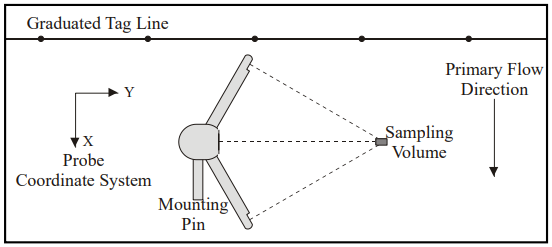
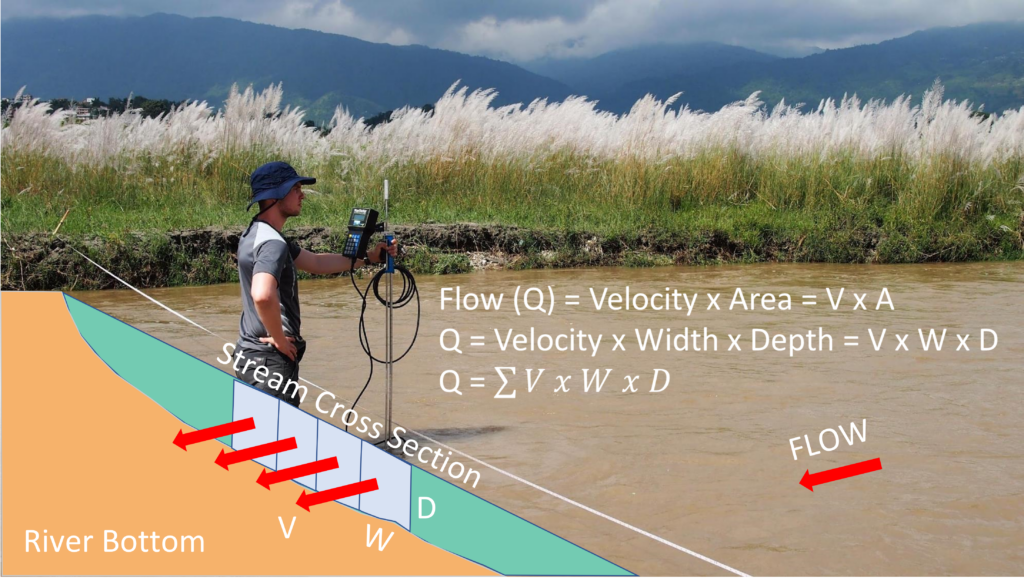
Streamflow data analysis and applications
The streamflow data collected by S4W-Nepal serves multiple research purposes. One key focus is analyzing the long-term trend of the streamflow to understand the river baseflow, which is essential for effective water resources management (Lakhe et al., 2021). In the Kathmandu Valley, baseflow information is crucial for the design of water supply projects and dams. Rapid population growth combined with climate change has strained water services in Kathmandu, leading to over-extraction of groundwater and a rapidly declining water table (Shrestha et al., 2022). S4W-Nepal is exploring the potential of streamflow as a sustainable resource to help balance the city’s water supply deficit and reduce reliance on groundwater. The recorded streamflow data, along with the rainfall data, can be used for flood modeling for different land-use and climate change scenarios, providing critical insights for managing water resources and mitigating flood risks.
